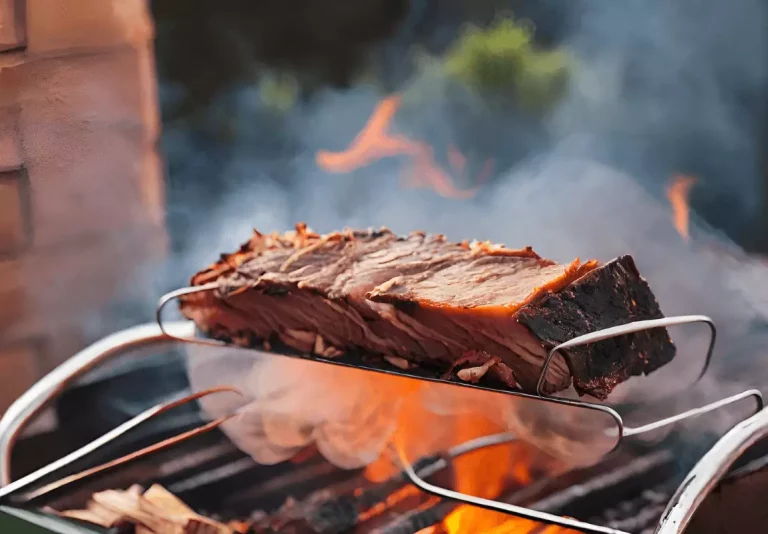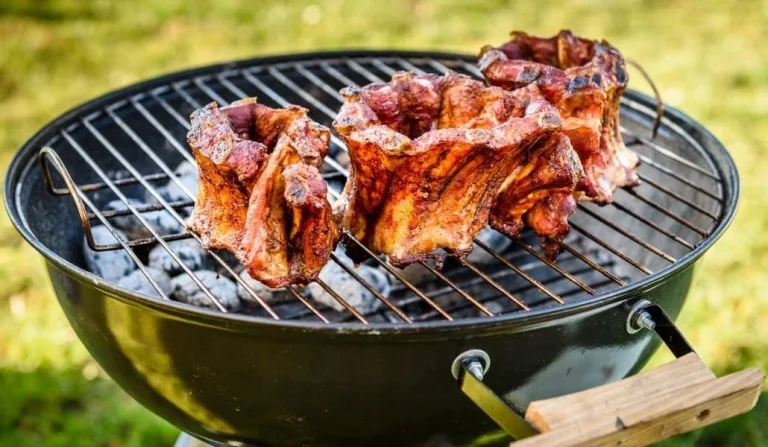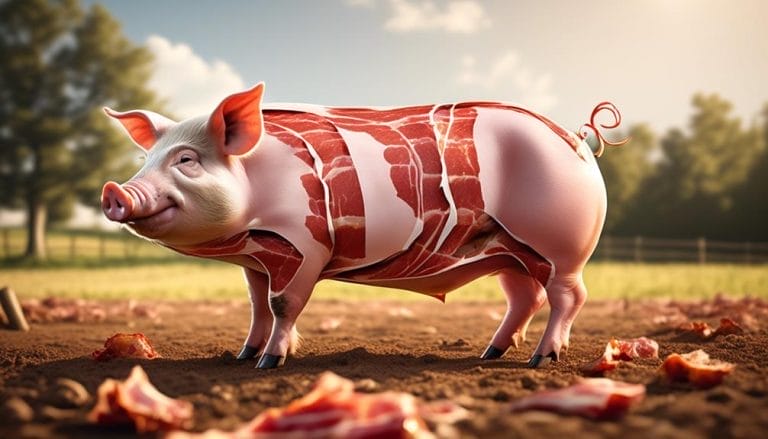What is Wet Aged Beef? Discover the Best Tips and Techniques
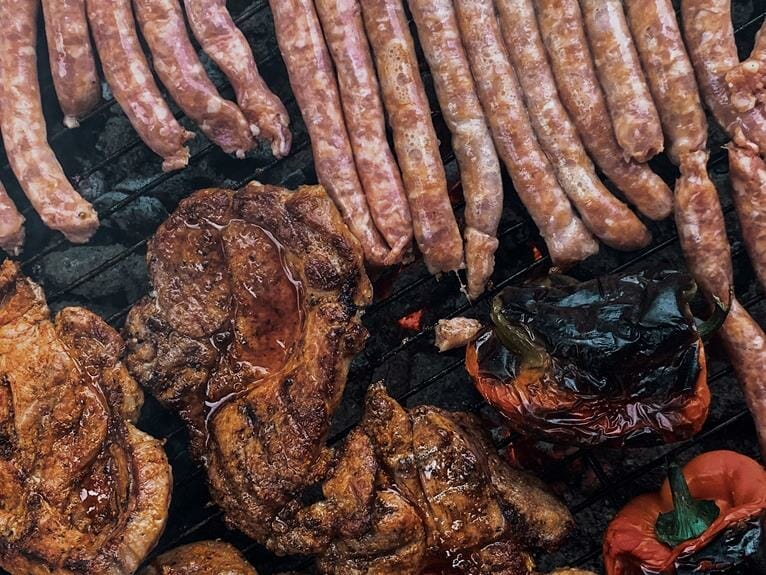
Do you consider yourself a connoisseur of fine meats? If so, you simply must acquaint yourself with the marvel that is wet aged beef.
This innovative technique, in contrast to dry aging, infuses the meat with unparalleled tenderness and juiciness.
In this article, we will delve into the process of wet aging, explore the best cuts for this method, and provide tips for storing and cooking this delectable treat.
Get ready to elevate your culinary game to new heights.
Wet Aging Vs Dry Aging: What’s the Difference
When comparing wet aging and dry aging, there are several key differences to consider.
One of the main distinctions is the flavor profile that each method produces. Wet aging tends to result in a more mild and tender meat, while dry aging creates a more concentrated, intense flavor.
Additionally, cost and availability should also be taken into account. Wet aging is often more cost-effective and readily available, while dry aging is pricier and can be harder to find.
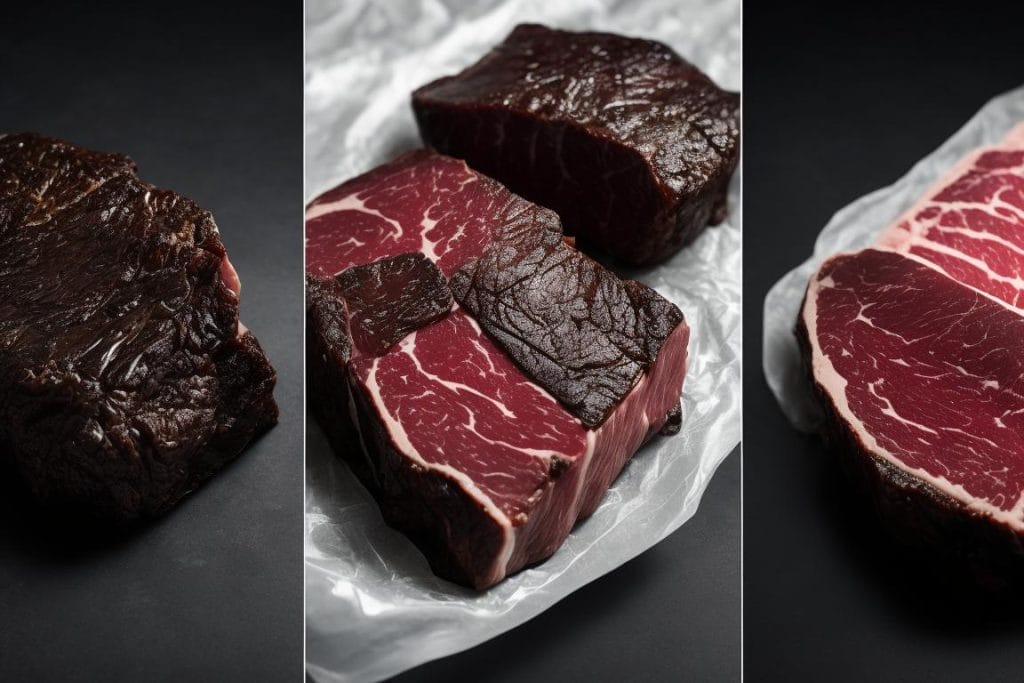
The present invention relates to a method of aging beef in stages, implemented by using, beef dry aging, wet aging, a vacuum packaging machine, a shrinking cooler, a gas exchange packaging device, and a vacuum-skin packaging device. More specifically, the method of aging beef in stages comprises: a first step of drying and aging beef at the predetermined temperature after slaughtering; a second step of cutting out fat and a surface of aged beef, dividing the beef into a predetermined size according to each body part, and vacuum packaging the divided beef; a third step of wet aging the beef in the second step at a low temperature chamber having the temperature of -1.5-1°C for 3-15 days; a fourth step of cutting the beef in the third step according to each body part, gas exchange packaging the beef, and wet aging the packaged beef at the lower temperature chamber having the temperature of -1.5-1°C for 1-15 days; and a fifth step of vacuum-skin packaging the beef in the fourth step and wet aging the packaged beef at the lower temperature chamber having the temperature of -1.5-1°C for 1-15 days.
https://patents.google.com/patent/KR102185949B1/
Flavor Differences Between Methods
To understand the flavor differences between wet aging and dry aging, it’s important to know how these methods of aging beef differ from each other. Here are three key points to create imagery in your mind:
Understanding these flavor differences can enhance your culinary experience and help you choose the aging process that best suits your preferences.
Cost and Availability Considerations
Now let’s delve into the cost and availability considerations when it comes to wet aging versus dry aging beef.
When it comes to cost, wet aging is generally more affordable compared to dry aging. This is because wet aging requires less time and space, making it a more cost-effective method for producers.
Additionally, wet aged beef is more readily available in the market due to its shorter aging process.
On the other hand, dry aged beef is considered a premium product and often comes with a higher price tag. It requires specialized storage facilities and a longer aging period, which contributes to its limited availability and higher cost.
Therefore, if cost and availability are contextually relevant factors for you, it’s important to consider these aspects when choosing between wet aged and dry aged beef.
Benefits of Wet Aging Beef
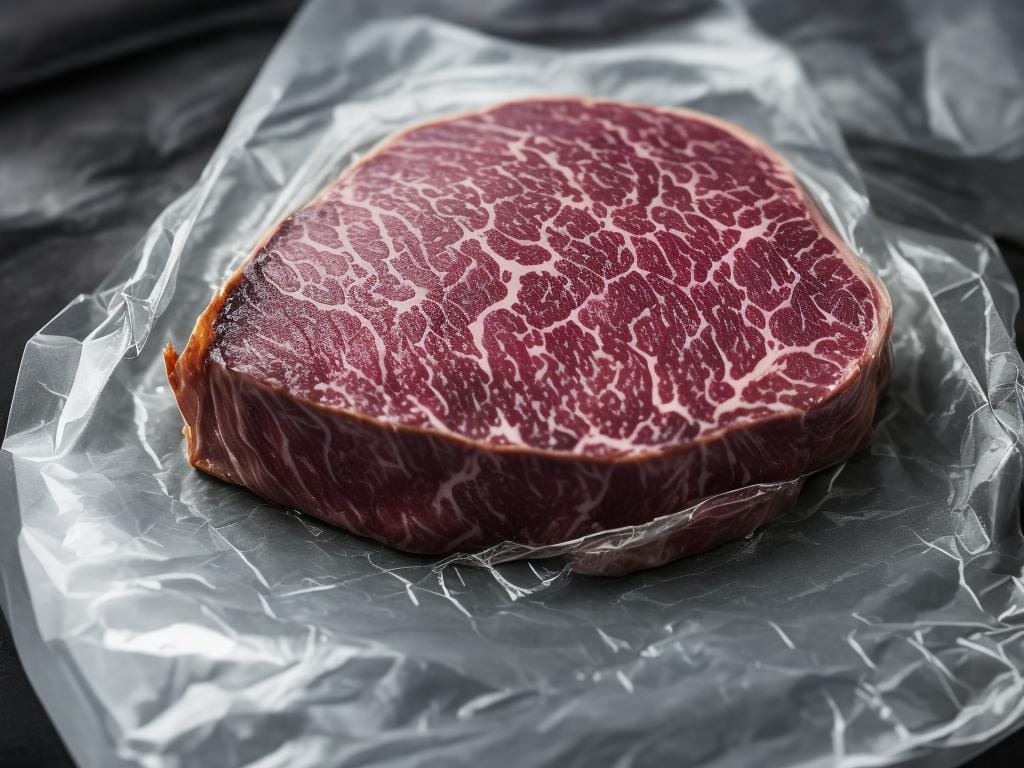
Experience the incredible benefits of wet aging beef for yourself. Wet aged beef undergoes a unique aging process that offers several advantages over traditional dry aging methods. Here are three key benefits of wet aging:
How Wet Aging Enhances Tenderness and Juiciness
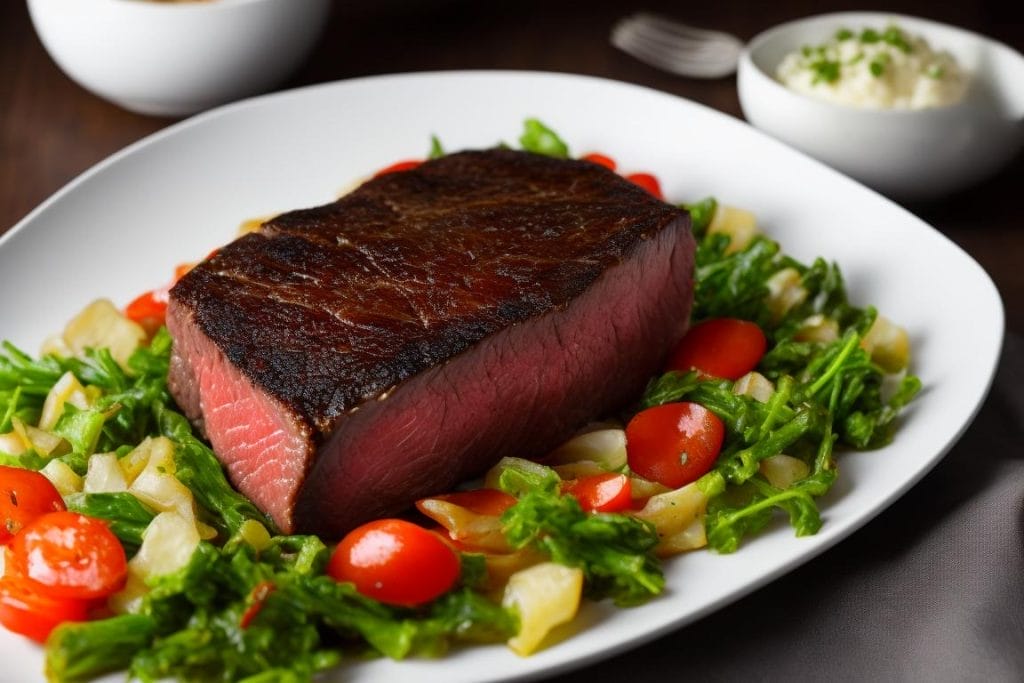
You can experience a significant improvement in tenderness and juiciness when you choose wet aged beef. Wet aging beef is a process where the meat is vacuum-sealed in plastic and then stored in a controlled environment, typically for several weeks.
During this time, natural enzymes break down the connective tissues in the meat, resulting in increased tenderness. The moisture retained in the vacuum-sealed package helps to preserve the juiciness of the beef.
Wet aging enhances tenderness by allowing enzymes to work their magic on the meat. These enzymes, such as calpains, help to break down the tough collagen and elastin fibers, resulting in a more tender texture. The longer the beef is aged, the more time the enzymes have to do their job, further enhancing the tenderness.
In addition to improved tenderness, wet aging also enhances the juiciness of the beef. When meat is vacuum-sealed, it retains its natural moisture, preventing it from evaporating. As a result, the beef remains juicy and succulent, even after cooking.
The process of wet aging beef not only enhances tenderness and juiciness but also allows for more consistent flavor development. The sealed environment helps to lock in the flavors and prevent any off-putting odors or flavors from affecting the meat.
Best Cuts of Beef for Wet Aging
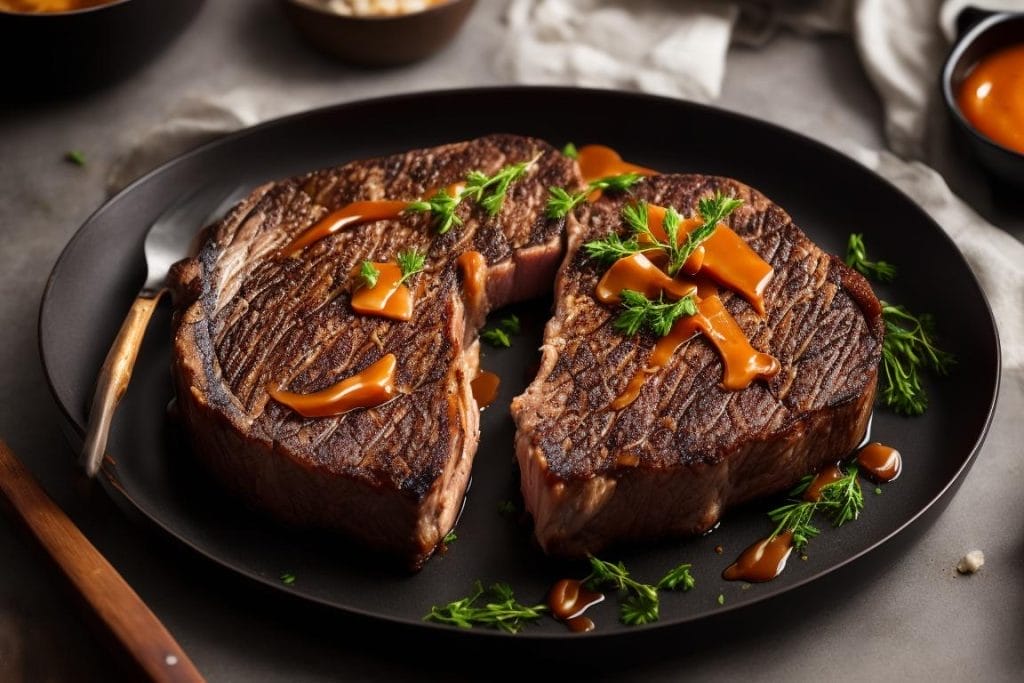
When considering the best cuts of beef for wet aging, it’s important to understand the distinction between lean and marbled cuts.
Lean cuts, such as sirloin or tenderloin, may not benefit as much from wet aging, as they’re already naturally tender.
On the other hand, marbled cuts, like ribeye or striploin, have a higher fat content which can enhance the taste and texture after being wet aged. The marbling allows for the flavors to penetrate the meat, resulting in a more tender and flavorful eating experience.
Lean Vs. Marbled Cuts
For the best results in wet aging beef, it’s important to choose cuts that are marbled with fat rather than lean. Marbling refers to the streaks of fat that are visible throughout the beef, and it plays a crucial role in the flavor and tenderness of the meat. When it comes to wet aging, marbled cuts are preferred due to their higher fat content.
Here are three reasons why marbled cuts are the best choice for wet aging beef:
Taste and Texture
To ensure optimal taste and texture in wet aged beef, it’s important to consider the best cuts for this process. The taste and tenderness of wet aged beef are greatly influenced by the initial quality of the cut. In general, cuts with a higher fat content tend to yield more flavorful and tender results after wet aging.
Prime cuts such as ribeye, striploin, and tenderloin are highly recommended for wet aging due to their marbling and tenderness. These cuts have a higher fat content, which enhances the flavor and juiciness of the beef during the wet aging process.
When storing wet aged beef, it’s important to keep it in a controlled environment with proper temperature and humidity levels. For those interested in wet aging beef at home, it’s crucial to follow strict food safety guidelines to prevent any risk of contamination.
The Process of Wet Aging Beef
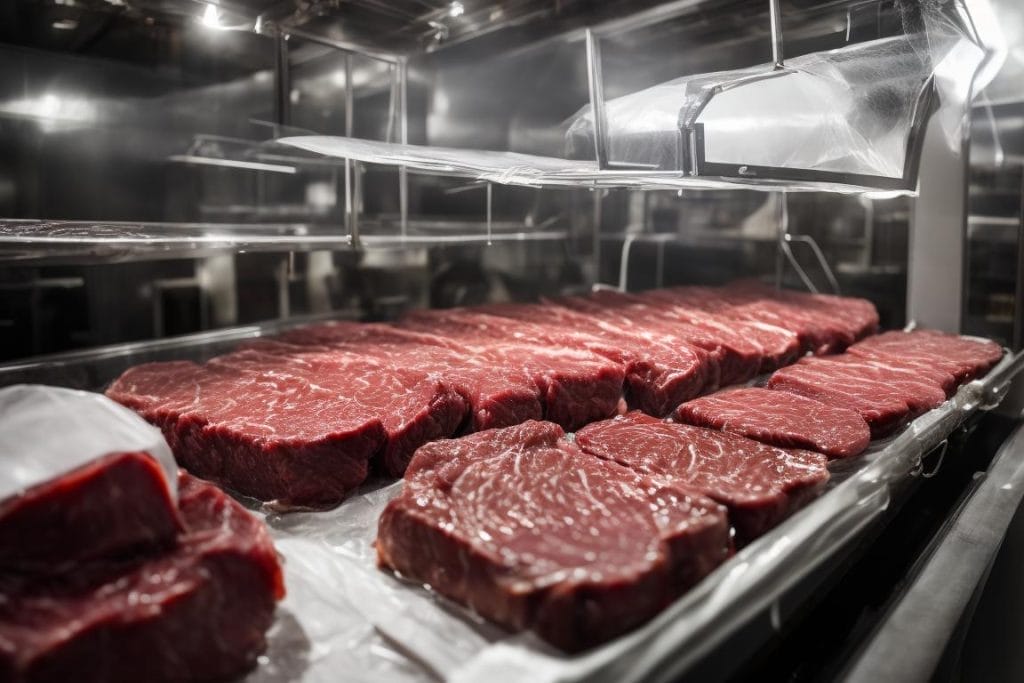
Now, let’s examine the benefits of wet-aging beef and compare it to dry aging.
Wet aging involves placing the beef in vacuum-sealed bags and allowing it to age in its own juices, which helps to enhance tenderness and flavor.
This method is different from dry aging, where the beef is exposed to air, resulting in a more concentrated and intense flavor profile.
Benefits of Wet Aging
When wet aging beef, the process involves placing the meat in vacuum-sealed bags and allowing it to rest in refrigeration for several weeks. Wet aging has several benefits that contribute to the tenderness and overall quality of the beef:
By utilizing the wet aging process, beef producers can ensure that their customers receive a superior product that’s tender, flavorful, and moist.
This innovative technique enhances the overall dining experience, making wet aged beef a popular choice among discerning meat lovers.
Comparison to Dry Aging
As you compare wet aging to dry aging, consider the differences in the processes and their effects on the quality of the beef. Wet aging beef involves vacuum-sealing the meat and allowing it to age in its own juices, typically for a period of 14 to 28 days.
On the other hand, dry aging beef involves hanging it in a controlled environment with specific temperature and humidity levels for several weeks.
To help you understand the differences between wet aged beef and dry aged beef, let’s take a look at this table:
| Wet Aged Beef | Dry Aged Beef |
|---|---|
| Aged in vacuum-sealed bags | Aged in a controlled environment |
| Aging time: 14 to 28 days | Aging time: several weeks |
| Retains more moisture | Loses moisture, resulting in concentrated flavors |
| Tenderizes the meat | Enhances tenderness and develops a unique flavor |
| Mild, slightly sweeter taste | Intense, nutty, and earthy flavor |
| Requires lower temperatures | Requires specific temperature and humidity levels |
How Long Can Beef Be Wet Aged
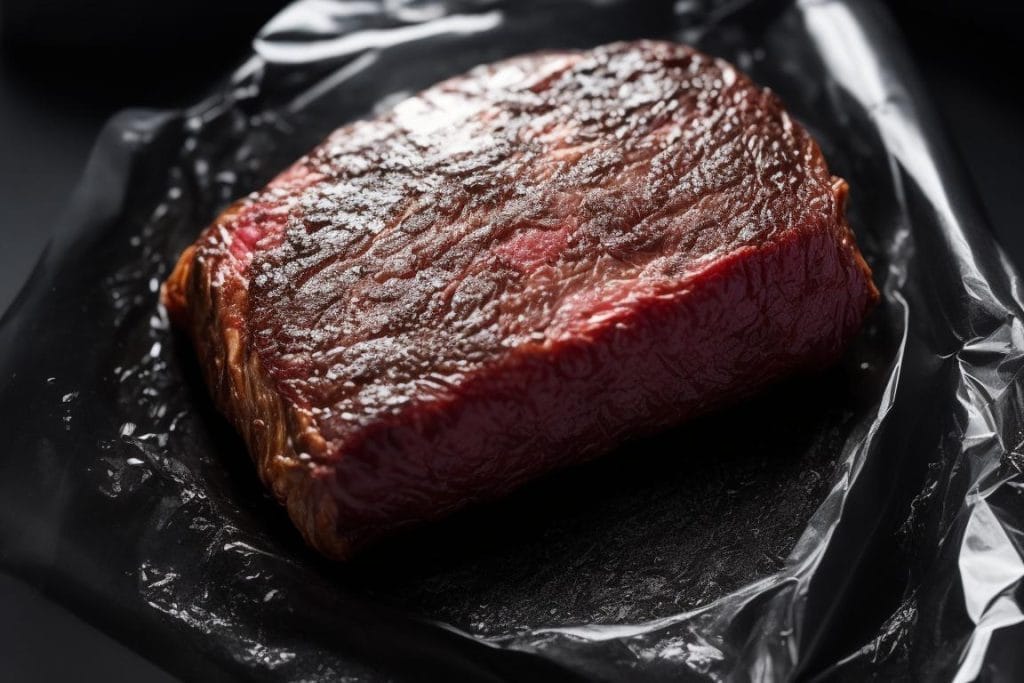
You can wet age beef for various lengths of time to achieve different levels of tenderness and flavor. The aging duration plays a crucial role in the final quality of the wet aged beef.
Here are three sub-lists that will help you visualize the process:
Tips for Storing and Cooking Wet Aged Beef
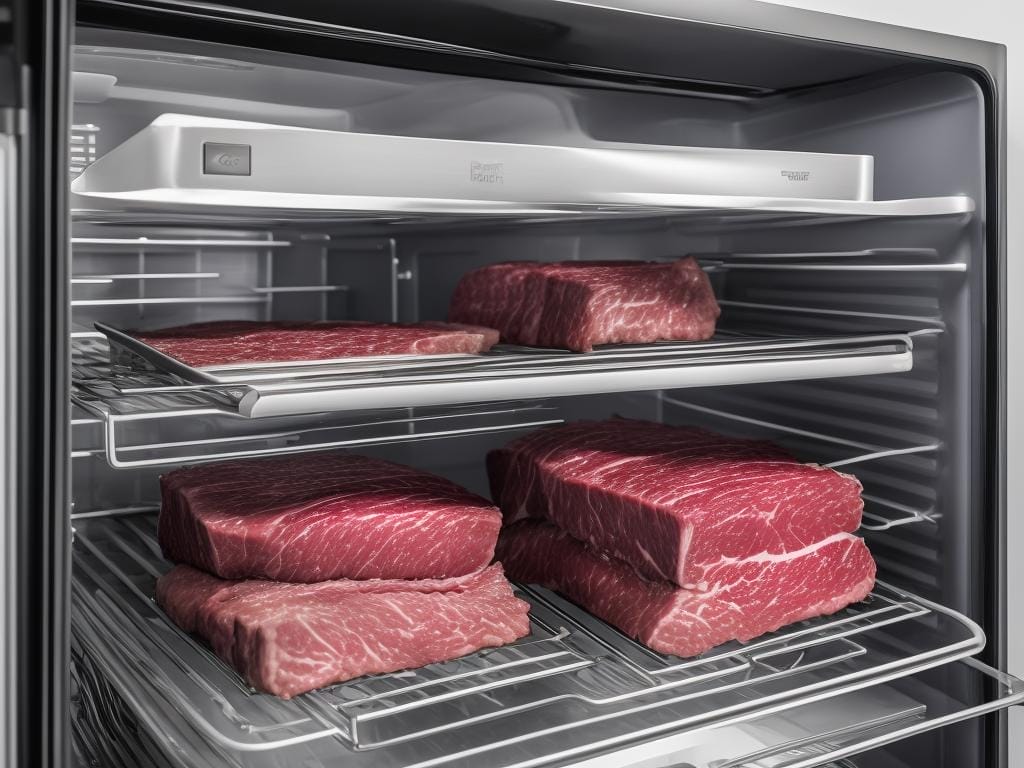
To properly store and cook wet aged beef, it’s essential to ensure that you have the right equipment and follow the necessary steps.
When it comes to storage, it’s crucial to keep wet aged beef refrigerated at all times. The optimal temperature for storing wet aged beef is between 32°F and 36°F (0°C and 2°C).
This helps maintain the quality and freshness of the meat. Additionally, make sure to store the beef in airtight containers or vacuum-sealed bags to prevent any contamination or moisture loss.
When it comes to cooking wet aged beef, there are a few tips to keep in mind.
- allow the beef to come to room temperature before cooking. This ensures even cooking and prevents the meat from drying out.
- season the beef generously with salt and pepper, or any other desired spices, to enhance its flavor. Thirdly, use a cooking method that suits the cut of meat, such as grilling, roasting, or pan-searing.
- Use a meat thermometer to ensure that the beef reaches the desired internal temperature for doneness.
Frequently Asked Questions

Is Wet Aging Beef More Common Than Dry Aging?
Wet aging beef is a common method used by many in the industry. It is often preferred over dry aging due to its ability to maintain moisture and increase tenderness in the meat.
How Does Wet Aging Beef Affect the Flavor Compared to Dry Aging?
Wet aging beef affects flavor differently than dry aging. The process enhances tenderness and juiciness while also preserving natural flavors. It’s a popular technique due to its convenience, shorter time frame, and ability to increase profit margins.
Can Wet Aging Beef Be Done at Home?
Yes, you can wet age beef at home. While some may argue that it requires specialized equipment, you can achieve similar results by vacuum sealing the beef and allowing it to age in the refrigerator.
Are There Any Specific Cuts of Beef That Should Not Be Wet Aged?
There are specific cuts of beef that should not be wet aged. The process can result in a loss of tenderness and flavor in these cuts. It is important to consider the characteristics of each cut before deciding on the aging method.
Does Wet Aging Beef Require Any Special Equipment or Facilities?
Wet aging beef does not require any special equipment or facilities. It is a process where the meat is vacuum-sealed and allowed to age in its own juices, enhancing tenderness and flavor.
Conclusion
In conclusion, wet aging beef is a process that enhances tenderness and juiciness, making it a popular choice among meat enthusiasts.
With the ability to retain moisture and develop complex flavors, wet aged beef delivers an exceptional dining experience.
Interestingly, research has shown that wet aging can increase the tenderness of beef by up to 10%, allowing for a succulent and melt-in-your-mouth texture that will leave your taste buds craving more.

